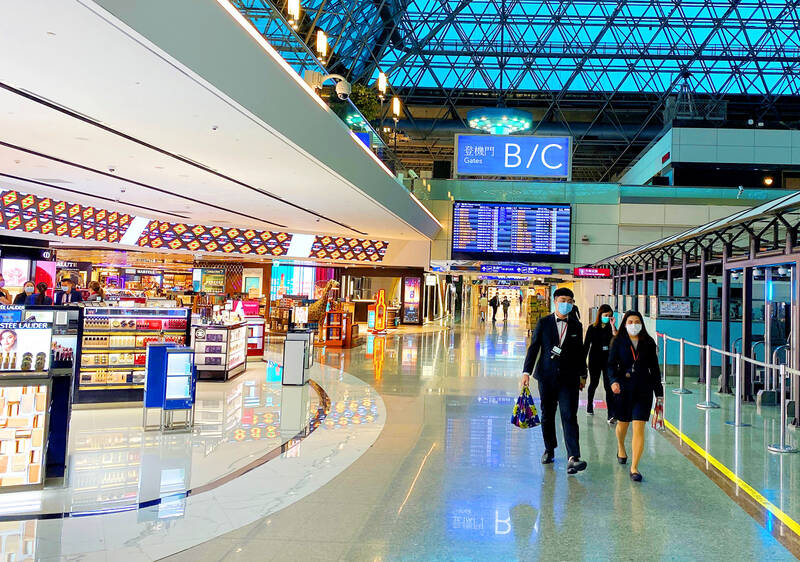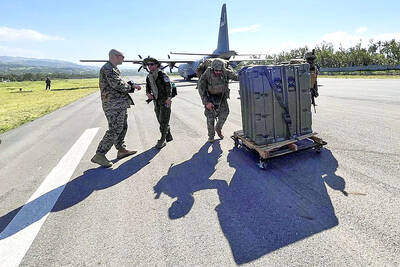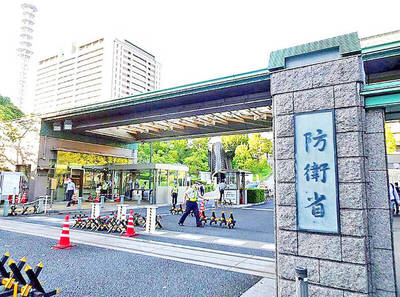Taiwan Taoyuan International Airport is falling behind its competitors as a major transfer hub in the Asia-Pacific region and needs to attract more foreign and budget airlines, an Institute of Transportation study found.
The study on the transfer traffic of US and Japanese carriers in the Asia-Pacific region found that international airlines have been shifting their focus to the region, as they see Southeast Asia and India as their main sources of growth over the next decade.
In line with that trend, airports in the region have been striving to boost capacity, increase flights and create new routes in the hopes of attracting more transit passengers, said the study, which was published in May.

Photo: Ben Blanchard, Reuters
Citing 2019 data, the study said that, as a regional transit hub, Taoyuan airport was trailing the four other major airports in the region: Hong Kong International Airport, Narita International Airport in Japan, Shanghai Pudong International Airport in China, and Incheon International Airport in South Korea.
For example, Taoyuan airport had a 20 percent share of the transit flights from the US to Vietnam, while Incheon Airport had a more than 50 percent share, the study said.
In terms of transit flights to the US, Narita airport topped the list with links to 23 US airports, followed by Incheon, Hong Kong and Shanghai airports with 11 to 17 links to US destinations, while Taoyuan airport had only nine links to US airports, the study showed.
The report said that Taoyuan airport should build its links with foreign airlines, including budget carriers.
It also advised the airport to provide travelers with more choices to increase its transfer passenger numbers via codeshare flights.
Taoyuan airport, run by Taoyuan International Airport Corp, is funded by the Ministry of Transportation and Communications, under which the Institute of Transportation falls.

LOOKING NORTH: The base would enhance the military’s awareness of activities in the Bashi Channel, which China Coast Guard ships have been frequenting, an expert said The Philippine Navy on Thursday last week inaugurated a forward operating base in the country’s northern most province of Batanes, which at 185km from Taiwan would be strategically important in a military conflict in the Taiwan Strait. The Philippine Daily Inquirer quoted Northern Luzon Command Commander Lieutenant General Fernyl Buca as saying that the base in Mahatao would bolster the country’s northern defenses and response capabilities. The base is also a response to the “irregular presence this month of armed” of China Coast Guard vessels frequenting the Bashi Channel in the Luzon Strait just south of Taiwan, the paper reported, citing a

A total lunar eclipse, an astronomical event often referred to as a “blood moon,” would be visible to sky watchers in Taiwan starting just before midnight on Sunday night, the Taipei Astronomical Museum said. The phenomenon is also called “blood moon” due to the reddish-orange hue it takes on as the Earth passes directly between the sun and the moon, completely blocking direct sunlight from reaching the lunar surface. The only light is refracted by the Earth’s atmosphere, and its red wavelengths are bent toward the moon, illuminating it in a dramatic crimson light. Describing the event as the most important astronomical phenomenon

ENHANCING DETERRENCE: Stationing the missiles in Kyushu would allow Japan to cover waters near Taiwan and China’s coastal areas without any logistical difficulties Japan is to deploy extended-range anti-ship missiles at a Ground Self-Defense Force base in Kumamoto to bolster its defenses, the Yomiuri Shimbun reported on Saturday. The upgraded Type 12 surface-to-ship missile, with a range of more than 1,000km, would be capable of striking targets in the Taiwan Strait and along China’s coast. Originally limited to a few hundred kilometers, the Type 12 was recently modernized ahead of schedule. Deployment, initially slated for next year, has been accelerated after the upgrade was completed sooner than expected, the newspaper said. Stationing the missiles in Kyushu would allow Japan to cover waters near Taiwan and

The presence of Taiwanese politicians at China’s military parade tomorrow would send the wrong message to Beijing and the international community about Taiwan’s sovereignty and democracy, a national security official said yesterday. China is to hold the parade tomorrow to mark the 80th anniversary of Japan’s surrender in World War II. By bringing together leaders of “anti-West” governments such as Russia, North Korea, Iran and Belarus, the parade aims to project a symbolic image of an alliance that is cohesive and unbending against Western countries, the national security official said, speaking on condition of anonymity. Former Chinese Nationalist Party (KMT) chairwoman Hung Hsiu-chu